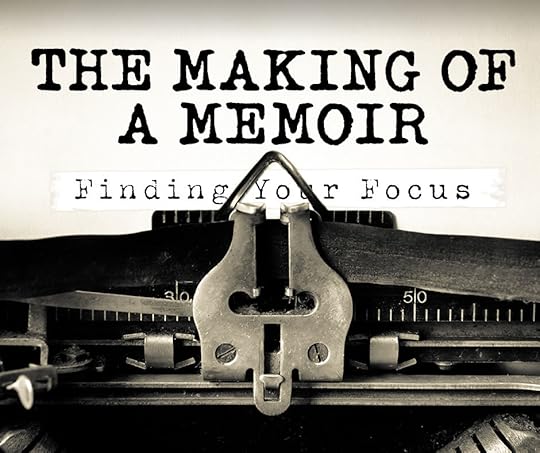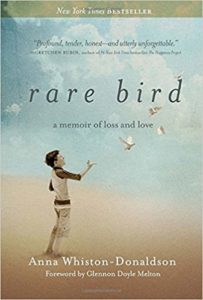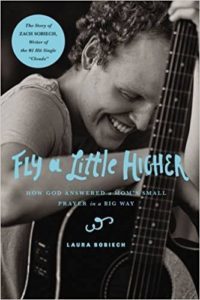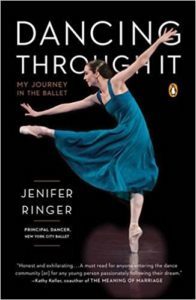Peter Lopez Jr.'s Blog: Xulon Press Blog , page 31
October 5, 2018
Maximize Your Reach with Holiday Shoppers

At this point, many of us know that the holidays are the biggest book-buying season of the year. That being said, books don’t sell themselves (usually). You’ll need to be sure that you’re doing your very best when it comes to marketing your book to help maximize your reach with those holiday shoppers. Just how many holiday shoppers are we talking? Check out this chart for the details.

So, what are some of the ways you can ensure your book is one of the gifts that contribute to the $680 billion spent by holiday shoppers? We teamed with a few of our publishing experts around the office to get their insight on the best ways to market your book.
Hands-On Marketing Tactics
Contact your local bookstore. This could be a bigger chain, like Barnes & Noble or Books-A-Million, but you may have more success with a locally owned bookstore. Ask if they have any time available for you to host a book signing or if you could leave printed advertisements of your book near their checkout counter. You’ll want to be sure to do this for a few months in advance to be sure they carry your book, and if they don’t this is a great way to get them too! The printed advertisement could have the information of your event on one side that shows your book cover an tells a little bit about you, and the other side could have the bookstores logo on it, that way it’s a win-win for both of you.
If book signings are something you’ve got on your radar, do everything you can to make them fun! Try to add a time slot to do a reading from your book, but make sure to engage your audience to spice it up a little. Getting into character will help make the reading more fun so feel free to take on the role of the character you are reading from! If you’ve got a kids book, perhaps do a reading with some fun puppets. This is a great way to engage people who may have some to store to shop and not necessarily for your book signing.
Set up some cider and snacks so that your guests are likely to stay and mingle. Don’t be afraid to log onto Pinterest and snag a few “cute” ideas to spice things up a little bit at the refreshment table.
Contact your local radio station and see if they have any interest in interviewing you. You may have to pay for airtime, but when you take into account the number of listeners chiming in, you can easily see the return on this. An important thing to remember here is that people love supporting local authors and artists, so be sure to plug that during your interview.
Digital Marketing Efforts
Social media, hello! This goes without saying, but just in case someone missed the memo, we’re going to touch on this one as well. Social media marketing is the key to spreading the word about your book. An Ad Campaign on Facebook is something you should start doing far in advance, if you develop it in the months leading up to the holidays, you’ll have a better idea of who your target audience is and be able to target them more directly when it’s time to launch those Black Friday and Christmas sales.
Stock up! Don’t be silly, stock your books way in advance because the printers will inevitably get delayed during the holiday season. Give yourself plenty of time to order, print, and replenish your books.
Make sure your Amazon and website both have books readily available for sale. Sharing your Amazon information is great because so many of us depend on it for our shopping needs, but your website will allow you to collect a greater royalty. Consider hosting a website exclusive sale to drive traffic to it. Don’t have an author website? That is something we can help with!
Are you blogging? If not, you should be. This is a great way to interact with your fans and potential readers. Start blogging more frequently leading up to the holidays so that you are fresh in everyone’s minds when it comes to sending a gift to their loved ones. You could even do a series around gift ideas, and mention your book as one of them.
Share, share share. Be present on social media as much as possible. Consider sharing a fun fact a day, or an excerpt from your book. The more people feel connected to you, the more they will want to read your work.
The numbers speak for themselves, which is why it was pertinent to include them here. You want your readers to think of your book when they are thinking through those gift ideas. Get your marketing plan together and get on out there and sell some books!
The data we used in this was retrieved from:
www.statista.com/topics/991/us-christmas-season/
www.businessinsider.com/amazon-dominates-with-holiday-shoppers-2017-12
The post Maximize Your Reach with Holiday Shoppers appeared first on Xulon Press Blog, Christian Self-Publishing.
September 24, 2018
Introducing: The Author Branding Bundle!
 Our office has been abuzz with the launch of a new product, specifically here in the marketing department. The Author Branding Bundle contains all the staples of social media to give you a launching pad for your new book and your career as an author. As a publisher we know why these sites are important, but if you’re new to the world of social media, you may not.
Our office has been abuzz with the launch of a new product, specifically here in the marketing department. The Author Branding Bundle contains all the staples of social media to give you a launching pad for your new book and your career as an author. As a publisher we know why these sites are important, but if you’re new to the world of social media, you may not.
Follow along as we break it down for you!
Facebook Fan Page
Facebook is a booming social media platform that almost everyone is on. This means if you have a specific target audience, they’re on Facebook. A Facebook Fan Page allows users to follow you for updates you post, like upcoming events or new developments, and share the information with their friends.
Facebook Advertising Campaigns
There are a lot of people on Facebook, so you have to stand out. An advertising campaign shows your information to those who are most likely to interact with it. This will help build your audience on your page as well as direct people where to purchase your book. Both of which are good things, am I right?
Goodreads Profile
Think of Goodreads as Facebook but specifically for books. Book readers, book writers, book reviewers, librarians and book buyers all use this site. This is essentially the shopping mall for bookworms. People can leave ratings and reviews as well as ask questions to the author. If an author has a profile on this site, they are likely going to have much more interaction with their readers.
Twitter Profile
Twitter is best for small bursts of information, similar to a text message. You only get 280 characters in a post so any information shared is valuable. This platform is excellent for sharing event announcements or tidbits of advice. Your followers can ‘retweet’ something you posted which is then shown to all of their followers, casting a wider net for your information to reach.
Instagram Profile
You’re in luck; we recently added Instagram to our products! We know the importance of keeping up with new marketing techniques and this is a big one. Instagram is all about pictures. Maybe you just got the first hard copy of your book – post it! Did you get a new banner for an event you’re holding – show it off! This is the most visual of all the platforms so get, so get creative not only with the pictures but their captions as well.
Amazon Exposure Page
When your book is listed on Amazon, your name is front and center. With an Amazon Exposure page, shoppers can click on your name for more information about you, including the collection of books you’ve written. This page gives them insight to the person behind the book, which may help them decide to buy.
Each of these platforms is unique and has a particular advantage. There are some similarities to help with ease of use, but to have a well-rounded brand it’s best to be present on all of them. Branding each of these pages is just as important so your followers will recognize you. We make sure to use the same name and cover photo on each profile to make a brand that is specific to you as an author.
Let our dedicated author marketing team help you get started with these great marketing tools and lead you to social media success.
The post Introducing: The Author Branding Bundle! appeared first on Xulon Press Blog, Christian Self-Publishing.
September 12, 2018
Writing Sprints: What They Are, How to Do Them, and Why You Should!

There are two writing woes that affect our writing more than than anything else—writer’s block, and editing when we should be freeform writing. Sometimes writing prompts can help infuse life back into a dry spell, but the newest writing trend is an activity called writing sprints (also known as word sprints), and they can actually help with both writer’s block and taming our inner editors.
What Are Writing Sprints?
Writing sprints are short bursts of focused writing time that can be done alone or with a group. Twitter and Instagram are also growing in popularity for writing sprints. Anyone can join in a sprint on Twitter by following hashtags like #writingsprints and #wordsprints. Instagram users have started using the “Live” feature when they want to connect with other writers during a word sprint.
How to Get Started?
First, you’ll need a piece of writing you’re currently working on (or you can use one of many writing prompts available online). Sprinters use a timer to set the amount of time they want to dedicate to their writing; the most common time increments are fifteen to thirty minutes, up to one hour. During this time, writers turn off all distractions and race against the clock to increase their word counts. If you’re going to sprint alone, all you need is yourself and your writing tools of choice—computer or old-fashioned pen and paper. If accountability is more important, seek out other writers at church or in your circle of friends and start a word sprinting group.
5 Tips to Maximize Your Word Sprints
Find the writing environment that works for you—at home in silence or a coffee shop with background noise.
Note your pre-sprint word count.
Don’t use your phone as a timer. Instead, use a good old-fashioned kitchen timer—it’s less distracting.
Once you set your timer, immediately move it out of sight so you aren’t checking the time you have left when you should be writing.
When you’re done, compare your post-sprint word count to where you started.
Why Should You Do Writing Sprints?
You may be asking yourself if you could benefit from writing sprints, and the answer is “yes.” Here are a few ways your writing life will improve:
Efficient use of time—Writing sprints are a huge boost for writers with busy lives. If you work five days a week and take a one-hour lunch every day, reallocate thirty minutes of your lunch to writing sprints and you automatically incorporate two and a half hours of writing into your schedule every week.
Variation produces results—Writing routines are great, but too much structure can choke out creativity. By varying the amount of time you use to write, you train your brain to produce, whether you have five minutes or five hours—which means less writer’s block and more productivity.
Results are in the numbers—On average, a slow sprinter is going to produce about 400 words in 30 minutes and an experienced sprinter can work his or her way to 1,000 words in a 45-minute window. At 1,000 words a day, that’s 30,000 words in just 30 days.
So what are you waiting for? Grab your latest work (or borrow one of our writing prompts), and get sprinting!
The post Writing Sprints: What They Are, How to Do Them, and Why You Should! appeared first on Xulon Press Blog, Christian Self-Publishing.
August 16, 2018
Why Writing Contests Matter for Self-Published Authors

Writing contests are one of those hit or miss spots for authors. People either love and trust them fully or they question everything about them. Generally speaking, most require a fee. If not, you should probably be a bit skeptical of where the funds are coming from and how much said contest will actually benefit you. What is often overlooked is the value they hold for self-published authors. Even more so, if the writing contest is hosted by a decently sized self or traditional style publisher.
The benefits
Depending on the particular writing contest, prizes vary and can include a cash reward, promotional or marketing services, or even a free publishing deal. For new authors and writers, this can be a make it or break it type of situation. Many writing contests now offer networking opportunities as well. This could be anything from Facebook groups where you can interact with other contestants to shout-outs on social media where they tag you and feature your book.
Outside of the direct benefits for winners, there are a few other reasons why you should consider writing contests. Submitting your work for a “grade” or the possibility of winning or losing, opens you up to a new form of suggestion and constructive criticism. It is not always easy to find out your prized possession “lost” a competition. However, it could help you grow and become a better writer. Just like your mama used to say, you’re always a winner. The moment you published your book you became a winner.
We’ve outlined a list of a few writing contests we think you should keep your eye out for, including one of our own!
Christian Writer Awards Writing Contest and the Christian Author Awards
Hosted by our experts here at Xulon Press, the Christian Writer Awards Writing Contest is one for the books (pun intended). This contest offers writers the chance to win a free publishing package valued at up to $8,780. It is especially enticing as we specialize in all things Christian self-publishing, and also offer a traditional style of distribution that no other self-publisher offers. Already published your Christian book? Check out the Christian Author Awards instead.
Cabell First Novelist Award
The Cabell First Novelist Award is an interesting competition as it applies to authors who have published their first book in the last year. The winner gets an all-expense paid trip to Richmond for three people for promotion, book signings, and to receive the $5,000 grand prize.
American Christian Fiction Writers Contest
The American Christian Fiction Writers organization hosts an annual Genesis contest highlighting unpublished Christian fiction writers. As a rather specific contest that doesn’t offer any sort of incredible prize, the purpose here is that the judges reading your work all work for publishing companies of some variety, which lends your book to serious exposure for potential publishing.
Next Generation Indie Book Awards
The Next Generation Indie Book Awards is one of the most notable writing contests on the market. This non-profit competition offers cash prizes in every category. Most importantly, it exposes each author to a number of big names in the publishing industry through the judging process. This one is really a no-brainer.
Eric Hoffer Book Award
The Eric Hoffer Book Award highlights small, academic, and independently published books. It’s perhaps one of the largest grand prizes we’ve seen in the world of writing contests, offering $2,500 to first place. Featuring a variety of prizes across all 18 of their submission categories, this is a great option for independently published books for sure.
Well, there you have it. These are five very different contests, to which hopefully one or two will suit you and your book. Writing contests often seem far-fetched. As someone who assists with multiple writing contests per year, I assure you they are worth the effort!
The post Why Writing Contests Matter for Self-Published Authors appeared first on Xulon Press Blog, Christian Self-Publishing.
July 27, 2018
Personal Branding for Authors: Part 3

Making It Match
If you have made it this far through the three-part series, you have likely spent some time thinking through how to begin creating or improving your branding efforts. The purpose of this final installment of the series is to circle back around to where you should start, and figure out where you should end. Without further ado, let’s talk a little more about you.
It All Starts With A Name
Perhaps the biggest takeaway here is that your personal brand should be a reflection of you. Maintaining your branding efforts will be a lot easier if it is reflective of the person you are, what you like to do and where you want to go. Start with something catchy, ideally involving your own name, your book or some variation of what you do. For example, my own personal brand is called “Mapp It Out Write.” It is simple and catchy. I utilize my last name as a tool to describe what I do. I am a writer, marketer, brand developer, and a perfectionist (I know, I’m working on that last one!). If you aren’t much of a “punny” person, tap on a friend’s shoulder who is! Once you’ve got something good, don’t second guess it, just roll with it.
Be Impossible To Forget
Once you’ve got your new fancy branding name, use it everywhere. Make it impossible for someone who is visiting your website, Instagram or Facebook to forget who you are. All of your social media handles should utilize the name you come up with. If something is unavailable, use the closest thing to it that you can manage. For example, on Instagram my handle is @MappItOut because I couldn’t get @MappItOutWrite. Purchase the domain for the branding name you come up with. Mine cost $12 a year, these prices vary so do your research before solidifying a name. Buy domains for similar names as well (i.e. www.mappitoutwrite.com and www.mappitout.org) and then using the place your website is hosted from, most commonly WordPress or SquareSpace, forward all of your domains to your website. If you end up visiting my website, be warned, it is under construction and currently undergoing a complete overhaul.
That’s A Wrap
Branding is pertinent in today’s world. As a writer, author, content creator, whatever title you relate too, you are expected to be “in the know” when it comes to brand development. It’s proven that consistent and relevant branding increases your social media following and enhances website traffic, all of which improve your chances of selling your product or book. As always, if you have any questions at all, leave a comment below and I would be happy to answer!
The post Personal Branding for Authors: Part 3 appeared first on Xulon Press Blog, Christian Self-Publishing.
July 20, 2018
Personal Branding for Authors: Part 2

In the first part of this two series blog, I talked about the purpose of branding and where to begin. In this part, I am going to dig into some of the resources you can use to develop and maintain your brand. If you missed the first post, I recommend you check that one out first before you continue.
Visual Aesthetics
People respond to visually appealing things. That being said, you should know what your audience wants to see—which means first and foremost, understanding them, and second, being able to create said visually appealing content.
A common misconception is that you need to spend big bucks with a graphic designer coming up with some spectacular logo. While that is always an option, it isn’t really necessary these days. Grab a friend who is on trend and cue Canva now. If you are not utilizing the magic that is Canva, you should be. Canva is au courant (fancy, huh?), user-friendly, and best of all – free. While there are certain graphics you have to pay for, there is plenty of free content you can utilize as well.
One of the things I love about Canva is that there are workarounds that can help you avoid paying for anything. You can take a photo of something on your phone or camera and upload that, then create a graphic from there. Or you can even download free stock images from a site like Pexels or Shutterstock and use those too. Generally speaking, Pexels has free photos and Shutterstock has photos available for a small fee.
What I am about to say is really important. Do not download images from Google, Facebook, etc. and use them in your branding. This is illegal and no good comes from it. That’s a whole other blog topic focused on copyright infringement, so for now, I am leaving it right here with just don’t do it.
Watch Your Language
In a former life as a journalist, I did A LOT of reporting on food deserts. A food desert is when a grocery store or main fresh food supply shuts down, leaving no other access to fresh foods nearby. It typically occurs in low-income areas where people don’t have regular access to convenient transportation. Imagine how embarrassed I was when someone pointed out the fact that I had made a social media post about my reporting and had typed “food dessert”. Yeah, let that sink in. These people have no access to sweet treats? That’s not nearly as sad as people not having to access to fresh food. My editor caught the typo in my story, but unfortunately, I don’t have an editor for my social media accounts.
Typos and grammar malfunctions may possibly be the cause of death for all writers. For some reason, people think that because we are writers we should know it all, but let’s be real – that is not always the case. Social media and personal websites are where we really build up our personal brand. It is direct, relatively transparent, and handed out for the world to see, typically without much vetting. Do everything in your power to ensure your posts, tweets, and whatever else you share on social is typo-free.
The best tool I know of to keep up with typos and grammar mistakes is Grammarly. This nifty little application is free and installs as a plug-in in your browser. A little green circle hangs out in the corner and lights up red whenever you have made a mistake. It doesn’t catch everything of course, but it is super handy for the most part.
The secret to a good sauce – consistency
You know the old saying “curiosity killed the cat”, if that’s true, then consistency would’ve been what kept the cat alive. Keeping your posts consistent is so important in the branding process. It’s what ensures people come back. The tone of voice, the style of writing, and most importantly, the timing.
Social media is a habit for most people. Many of us wake up to the sound of an alarm, promptly pick up our cell phones, and then scroll around haphazardly to see what we missed while we were ‘away’. The next chance we get to scroll through our gadgets is around lunchtime. And then finally, the evening, which depending on your audience – is generally a free for all.
Think of your audience, imagine what they do throughout their day. That sounds a little weird, but you have to manage your social media accounts with intention in order to gain followers and expand your audience.
Say you write recipes for busy moms. You wouldn’t want to post a new recipe at 8 a.m. because realistically, no mom is going to be cooking up a brand new recipe at 8 a.m. Unless it was a planned thing. Share that at night time, when they can plan it into their schedule for the next day or the weekend.
Now, whether you are a full-time blogger and influencer, or a full-time writer and part-time social media guru, you will likely need help keeping up with all the posting. For that, I recommend using something like HootSuite or Buffer. These websites allow you to develop, schedule and share content on multiple platforms. Something like this you ensures you are posting with intention instead of blasting out your book release date while driving. While there are other resources for this that I recommend over these two, these both have free options and get the job done.
I could talk about the importance of these three factors all day long. For now, I am going to call it right here. Comment below with any questions you may have!
The post Personal Branding for Authors: Part 2 appeared first on Xulon Press Blog, Christian Self-Publishing.
July 13, 2018
Personal Branding for Authors: Part 1 of a 3-Part Series

What is Branding?
Branding. What does that word mean to you? Five years ago I would have told you it was what made a company or a product stand out. It was consistent, unique, and fitting to their concept. These days I would say branding means all those same things. However, now we are peeling back the layers of a very flaky, buttery croissant (yum) to find that branding does not only apply to companies or products, it applies to individuals. Particularly, individuals who have a skill or asset that benefits others and can be marketed and sold.
Be Consistent
As a writer, brand development is key. Consistency is the secret sauce when it comes to your brand. Your own personal style should follow through from your social media accounts and websites, all the way to the language you use or the way you address readers and potential followers. By doing so, you leave a much more memorable impression on potential readers, customers, and subscribers.
Some specific examples could be ensuring you have the same profile picture on all of your social media accounts—which means taking a photo with forethought so that it can be optimized across all platforms (i.e. Facebook uses square profile photos where Instagram uses circle profile photos). If your website features a ton of deep blue accenting, then utilize that in your email settings, business cards, etc.
Be Intentional
This leads me back to where you should actually start this whole process. You can’t randomly decide to swap things up because you change your mind about the colors you’ve chosen or the language you used to describe yourself as a brand. All of this should be done with full intention.
Whether you have already started this whole branding thing and are just working to fine tune it, or this is your first go at it and you don’t know what you want your brand to become, the best place to start is to sit down and imagine your brand, visualize your path, design your end goal—then set your intention.
Approaching the process this way will ensure you don’t rush into a trend or try to appeal to the masses, but rather target your niche audience and illuminate your end goal.
Be Yourself
A really great place to start is with the energy and feeling that recognizing your end goal made you feel. Is it something light and bright? Is it bold and expressive? Sweet and delicate? Start there.
Choosing a color profile or concept is a very basic way to begin the process, but when you connect that to something you feel, in this case, to the highest possible success you can picture for yourself, you will likely have something you love for years to come. Hopefully eliminating the need for new business cards, re-formatting websites, and annual social media overhauls – this can also help align you with your purpose and drive home a higher level of success in your business.
In the second part of this mini-series, I will be discussing the tools and techniques you can use to make your brand stick. Developing a personal brand takes a lot of thought and effort, so I am just hoping to make that process a little bit easier for you! Please comment below if you have any questions.
The post Personal Branding for Authors: Part 1 of a 3-Part Series appeared first on Xulon Press Blog, Christian Self-Publishing.
May 31, 2018
Collaborate to Amplify Your Writing

Spinning in your own wheel
In a world full of words, it’s easy to find yourself recycling, rewinding and reinventing the same wheel time and time again. When we immerse ourselves in our own writing routine, our own wheel so to speak, that’s when we are most likely to produce something we’ve already created before. So, how do we find our way out? How do we produce content that will fulfill our readers, exceed our own expectations, and deliver the message we are called to write? Collaborate, that’s how.
You can’t grow as a writer without the help and guidance of other writers. Think about it. Why do we have editors? Their main job is not to catch our typos, although we are thankful they do! Their job is to ensure our work translates to our readers in the ways we dreamt it would. Many of us know, the first couple of drafts don’t always translate.
Collaborating with creators creates creativity. Say that three times fast.
Collaborate to elevate
When we immerse ourselves in something other than our own writing, we begin to see the ways we can improve. Sometimes this means attending a writers workshop. Sometimes this means listening to a lecture on writing processes. Other times it is understanding the way a book takes form. Either way, if we don’t expose ourselves to the thoughts and processes of those who have gone before us we are doing ourselves a disservice.
Say it once more, collaborating with creators creates creativity. So, are you ready to amplify your writing? If so, now is YOUR time. There is an upcoming writers workshop and conference where you can collaborate, network and immerse yourself in all things writing, with people who share your same values.
Xulon Press is hosting their very first Amplify Writing Conference on June 8th-9th. The two day conference is overflowing with workshops, networking, lectures, breakout sessions and even one-on-ones with some of their speakers. From editing to marketing, from an idea to a final draft, this conference is covering all the bases for Christian authors.
Click here for more information about our writers workshop, the Amplify Writing Conference!
The post Collaborate to Amplify Your Writing appeared first on Xulon Press Blog, Christian Self-Publishing.
February 23, 2018
The Making of a Memoir Part 3: It’s All About Structure

This is the third and final post in a series all about writing your memoir. You can find helpful tips in the first post about getting started and the second post about brainstorming.
Tangling with structure is about as common a writing problem as you can get. However, when you are writing about your own life it can be even trickier. You are looking at sets of events from the inside, all too close to see them with any different perspective. A single event can be told from lots of angles, but your job is to pluck events that defined your life out of the bevy of simply disconnected happenings. You want the reader to know you, know your story, know your environment, but at the same time you want each event to carry a unifying string that threads them together—unique beads on the same necklace. This is why structuring your memoir is so important: it binds your novel together.
1. Find Your Drive
You should have already chosen your topic as we discussed in the last post of this series, but how do you structure a book around this? Ask yourself one question about the time period you want to write about: what did you want?
You want to open your own business even though you are starting from nothing
You are searching for a place that feels like home, even though you move foster homes each year
You want to travel the world after your spouse’s death
It is the desire for something just out of reach that keeps us going in life, so it makes sense that it is what will propel the action in your memoir. Every scene should use this dream, this want, this goal to connect to the next. Of course, just as in life, what you want should evolve and grow as you do through shifts in understanding, experience, and obstacles. Your main goal will sprout smaller goals that you have to achieve on your way. This will all lead up to your climax and subsequent resolution.
2. Write Your Outline
So now your head might be spinning with events and people from your past, but don’t worry. Creating a simple outline of your book will make sure that your story’s structure makes sense. Start out with the basic events that make up this quest toward what you want, and then fill in any gaps. What made you want this in the first place? What will help the reader relate to this desire? What obstacles did you have to hurdle to get there? Maybe you achieve your main goal, but it comes with unexpected problems; now what do you want?
3. Check out Your Plot
Look at that nice outline you made and check that it has all the basic parts of plot:
Exposition
Rising action
Climax
Falling action
Resolution
Missing something? Fill it in. Shift some events around until it seems right. Remember, your story doesn’t have to be in chronological order. If a story from your childhood would explain why you reacted so strongly to an event in your forties, feel free to tell it then. Just make sure it flows.
Now you can start writing! Follow your outline and tell your story. Then revise, revise, revise. Have fun!
The post The Making of a Memoir Part 3: It’s All About Structure appeared first on Xulon Press Blog, Christian Self-Publishing.
February 16, 2018
The Making of a Memoir Part 2: Finding Your Focus

In the previous post in this series we looked at what a memoir is and how it differs from an autobiography. So now you know you are writing your memoir, but what exactly will it be about? You need a unifying theme or event that every scene builds up to (a random smattering of “stuff that happened to you” isn’t going to work). Perhaps you can think of a hundred possible turning points in your life to write about, or maybe one defining event jumps out at you. Figuring this out is perhaps the most important step of all. This is the heart of your memoir.
At this step you may begin to think that your life is nothing to write about, but you would be wrong. You don’t need some grandiose story to make a memoir. You don’t need a childhood that rivals Oliver Twist’s, or experience in a French circus. All of us are filled with seemingly unsubstantial experiences that have molded our perspectives and personalities. Gather what you have been through and put it in words. You have a beautiful story inside you waiting to come alive.
Follow these steps to brainstorm your focus:
1. List every life-changing event of your life.
Think about events that changed you somehow or taught you a valuable lesson. You are looking for the conflict of your memoir, or possibly the climax.
Now circle the event that you think you could write an entire book about and be specific.
“Surviving abuse” is not a specific defining event, but it could be how you got there. What have you accomplished despite the odds?
Think about how others might gain insight into their own lives by reading it, but it doesn’t have to be a universal experience. Perhaps overcoming dyslexia helped you graduate as Valedictorian of your class, and your perseverance could inspire other readers to be persistent in their own endeavors.
2. Decide on your theme.
What is the underlying idea of your story? What lesson do you want reader to take away? (The silver lining of missed opportunities? Life goes on after tragedy?) This is what you will say when someone asks you what your book is about. You can’t just say, “me”!
It helps to think about how you changed from the beginning to the end of the time period you want to write about.
You should have a good idea of what your theme is when you begin writing, but it is okay for it to change as you begin developing your memoir.
3. Read with a writer’s eye
Now that you are starting your memoir, begin reading with a focus on the craft of writing. Read memoirs, but everything else as well. What does their first sentence look like? How do they unfold their timeline? What actions and descriptions give the protagonist’s personality? How do they create suspense? What writing style do you love? What writing style do you hate?
Some More Memoirs Worth Reading
Go back to the first post in the series for the first list of some inspiring memoirs.
Rare Bird: A Memoir of Loss and Love by Anna Whiston-Donaldson
Fly a Little Higher: How God Answered a Mom’s Small Prayer in a Big Way by Laura Sobiech
Dancing Through It: My Journey in the Ballet by Jenifer Ringer
The next post in the series will get down to the business of writing your book, including some great ways to organize all those events.
The post The Making of a Memoir Part 2: Finding Your Focus appeared first on Xulon Press Blog, Christian Self-Publishing.
Xulon Press Blog
- Peter Lopez Jr.'s profile
- 8 followers






